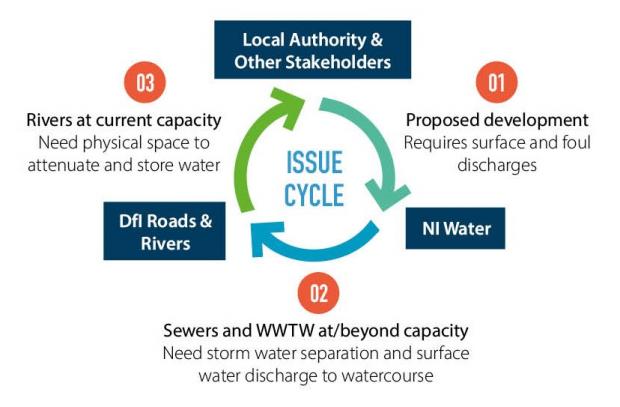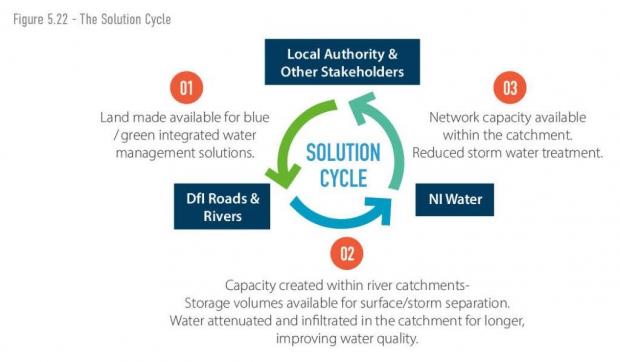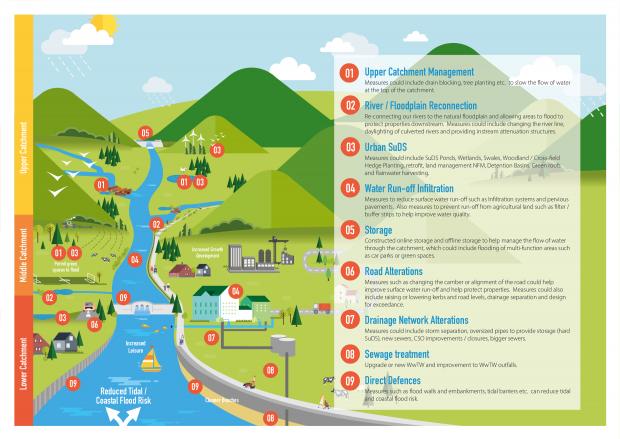Through the LWWP, DfI officials have been taking a leading role in developing partnerships with many stakeholders across central and local government and the private sector to develop a new approach for drainage and wastewater management which will deliver outcomes that:
- are wider than the individual focus of one participant, in accordance with the approach taken in the Programme for Government; and
- address issues in water quality and the risk of flooding at the same time.
This could mean that the solution to a flooding issue which is the responsibility of one drainage organisation could be solved by holding back water in a green space that is the responsibility of an entirely different organisation.
For example, one of the biggest issues that needs addressed is the amount of surface water entering our drainage and wastewater infrastructure. When clean rainwater mixes with sewage, it not only increases wastewater collection and treatment costs but it also causes increased instances of pollution and flooding. The graphic below shows that this is a problem that cannot be solved by one organisation in isolation; an integrated and collaborative approach is needed.


Drainage and wastewater solutions in the past have tended to be of a conventional nature, whether this was via constructing bigger pipes or building taller flood walls. These off-the-shelf solutions are usually tried and tested with low levels of risk and therefore appear attractive. However, they can involve expensive operating and maintenance costs which make them unsustainable in the long run.
Green spaces such as parks, pitches, golf courses, fields and gardens have not traditionally been considered to be drainage infrastructure. Yet when these green spaces are developed and replaced with hard surfaces, the rainwater that was previously absorbed and attenuated becomes surface water. This can cause flooding and overload combined sewers resulting in pollution. Green spaces therefore already play key role in managing surface water flood risk and should be included as an integral part of the urban drainage system. When considered holistically, green spaces and blue corridors, such as rivers, can form an extensive city-wide network of blue/green infrastructure that can drain, absorb and retain water. Blue/green infrastructure offers many more benefits to communities than just drainage; it can provide new opportunities for walking and cycling and act as a catalyst for cultural change in the way we live and travel.
The Living With Water Approach recognises the importance of investment in hard-engineered measures; however blue/green infrastructure also has an important role to play. If developed and implemented successfully, as part of a fully integrated catchment based programme, this should result in the scale and cost of some of the hard engineered solutions being reduced or in some cases not required.

